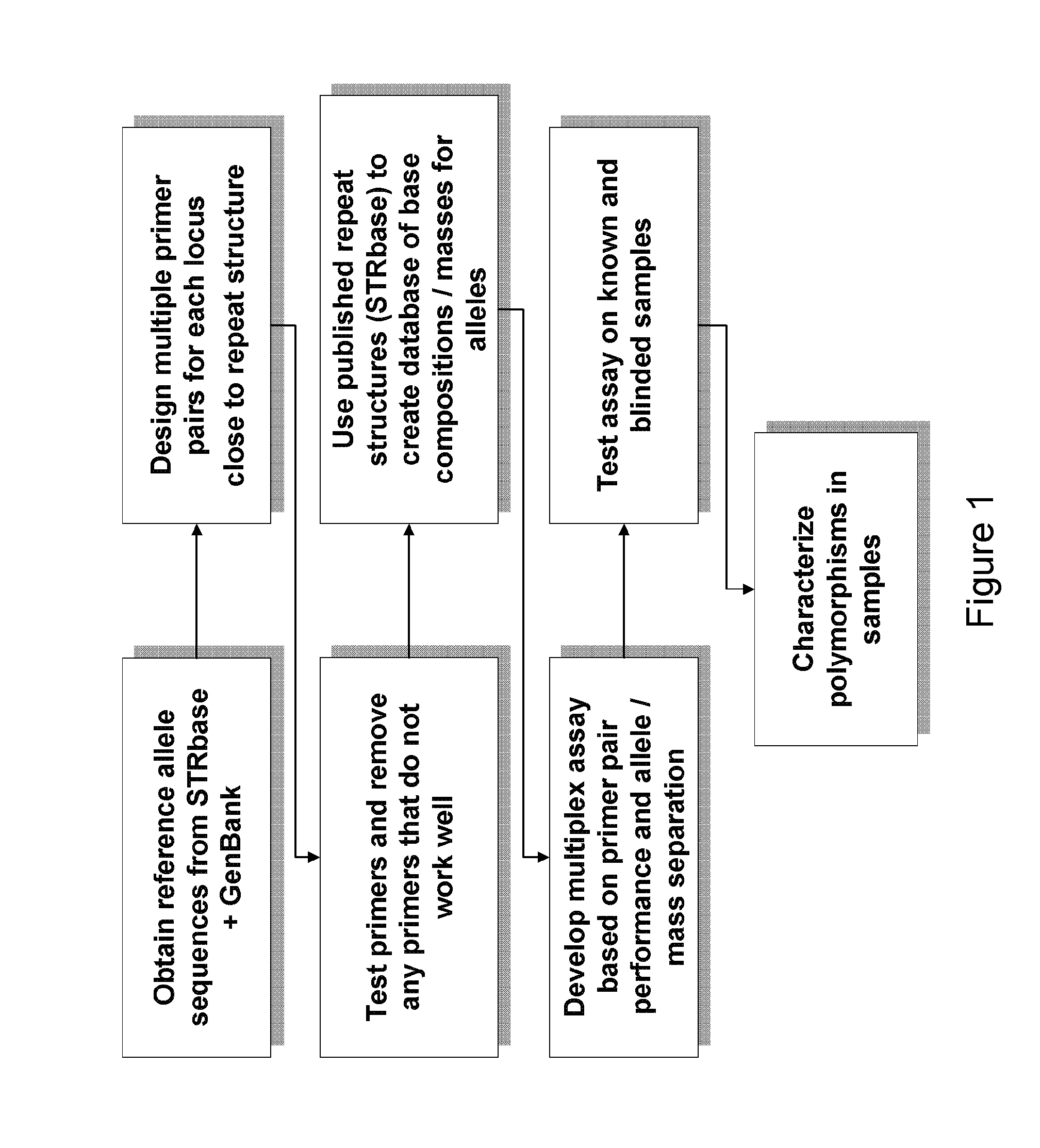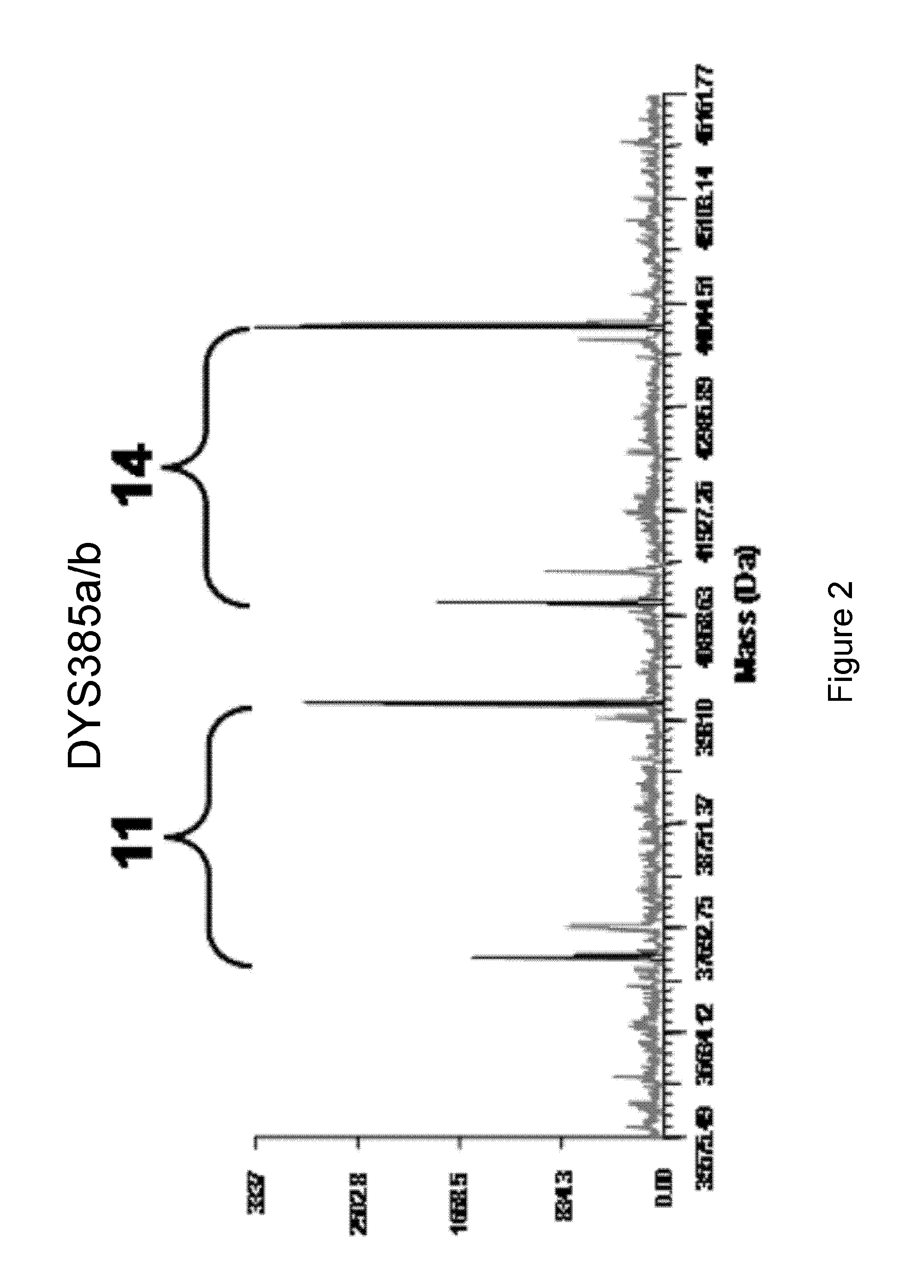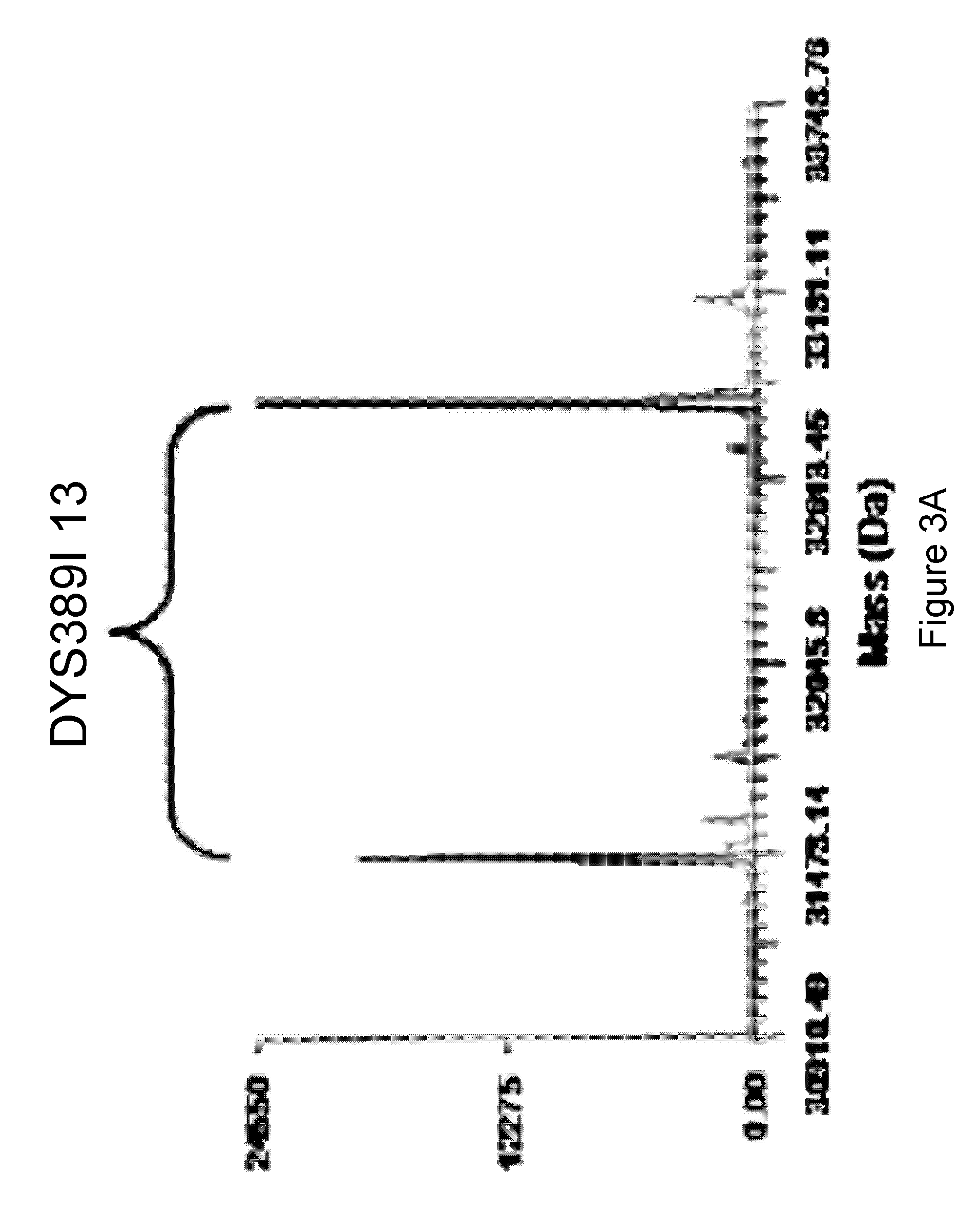Methods For Rapid Forensic DNA Analysis
a forensic and dna technology, applied in the field of forensic dna analysis, can solve the problems of difficult analysis, male and female components cannot be completely separated, and the dna typing is less desirable, and achieve the effect of minimizing the non-template adenylation of the amplification produ
- Summary
- Abstract
- Description
- Claims
- Application Information
AI Technical Summary
Benefits of technology
Problems solved by technology
Method used
Image
Examples
example 1
Nucleic Acid Isolation and Amplification
[0123]General Genomic DNA Sample Prep Protocol: Raw samples were filtered using Supor-200 0.2 μm membrane syringe filters (VWR International). Samples were transferred to 1.5 ml Eppendorf tubes pre-filled with 0.45 g of 0 7 mm Zirconia beads followed by the addition of 350 μl of ATL buffer (Qiagen, Valencia, Calif.). The samples were subjected to bead beating for 10 minutes at a frequency of 19 l / s in a Retsch Vibration Mill (Retsch). After centrifugation, samples were transferred to an S-block plate (Qiagen, Valencia, Calif.) and DNA isolation was completed with a BioRobot 8000 nucleic acid isolation robot (Qiagen, Valencia, Calif.).
[0124]Isolation of Blood DNA—Blood DNA was isolated using an MDx Biorobot according to according to the manufacturer's recommended procedure (Isolation of blood DNA on Qiagen QIAamp® DNA Blood BioRobot® MDx Kit, Qiagen, Valencia, Calif.). In some cases, DNA from blood punches were processed with a Qiagen QIAmp DNA...
example 2
Purification of Amplification Products
[0136]Procedure for Semi-automated Purification of a PCR mixture using Commercially Available ZipTips®—As described by Jiang and Hofstadler (Y. Jiang and S. A. Hofstadler Anal. Biochem. 2003, 316, 50-57) an amplified nucleic acid mixture can be purified by commercially available pipette tips containing anion exchange resin. For pre-treatment of ZipTips® AX (Millipore Corp. Bedford, Mass.), the following steps were programmed to be performed by an Evolution™ P3 liquid handler (Perkin Elmer) with fluids being drawn from stock solutions in individual wells of a 96-well plate (Marshall Bioscience): loading of a rack of ZipTips®AX; washing of ZipTips®AX with 15 μl of 10% NH4OH / 50% methanol; washing of ZipTips® AX with 15 μl of water 8 times; washing of ZipTips® AX with 15 μl of 100 mM NH4OAc.
[0137]For purification of a PCR mixture, 20 μl of crude PCR product was transferred to individual wells of a MJ Research plate using a BioHit (Helsinki, Finland)...
example 3
Mass Spectrometry
[0139]The ESI-FTICR mass spectrometer used is a Bruker Daltonics (Billerica, Mass.) Apex II 70e electrospray ionization Fourier transform ion cyclotron resonance mass spectrometer (ESI-FTICR-MS) that employs an actively shielded 7 Tesla superconducting magnet. The active shielding constrains the majority of the fringing magnetic field from the superconducting magnet to a relatively small volume. Thus, components that might be adversely affected by stray magnetic fields, such as CRT monitors, robotic components, and other electronics can operate in close proximity to the ESI-FTICR mass spectrometer. All aspects of pulse sequence control and data acquisition are performed on a 1.1 GHz Pentium II data station miming Bruker's Xmass software. 20 μL sample aliquots are extracted directly from 96-well microtiter plates using a CTC HTS PAL autosampler (LEAP Technologies, Carrboro, N.C.) triggered by the data station. Samples are injected directly into the ESI source at a fl...
PUM
| Property | Measurement | Unit |
|---|---|---|
| molecular weight | aaaaa | aaaaa |
| pH | aaaaa | aaaaa |
| total volume | aaaaa | aaaaa |
Abstract
Description
Claims
Application Information
 Login to View More
Login to View More - R&D
- Intellectual Property
- Life Sciences
- Materials
- Tech Scout
- Unparalleled Data Quality
- Higher Quality Content
- 60% Fewer Hallucinations
Browse by: Latest US Patents, China's latest patents, Technical Efficacy Thesaurus, Application Domain, Technology Topic, Popular Technical Reports.
© 2025 PatSnap. All rights reserved.Legal|Privacy policy|Modern Slavery Act Transparency Statement|Sitemap|About US| Contact US: help@patsnap.com



